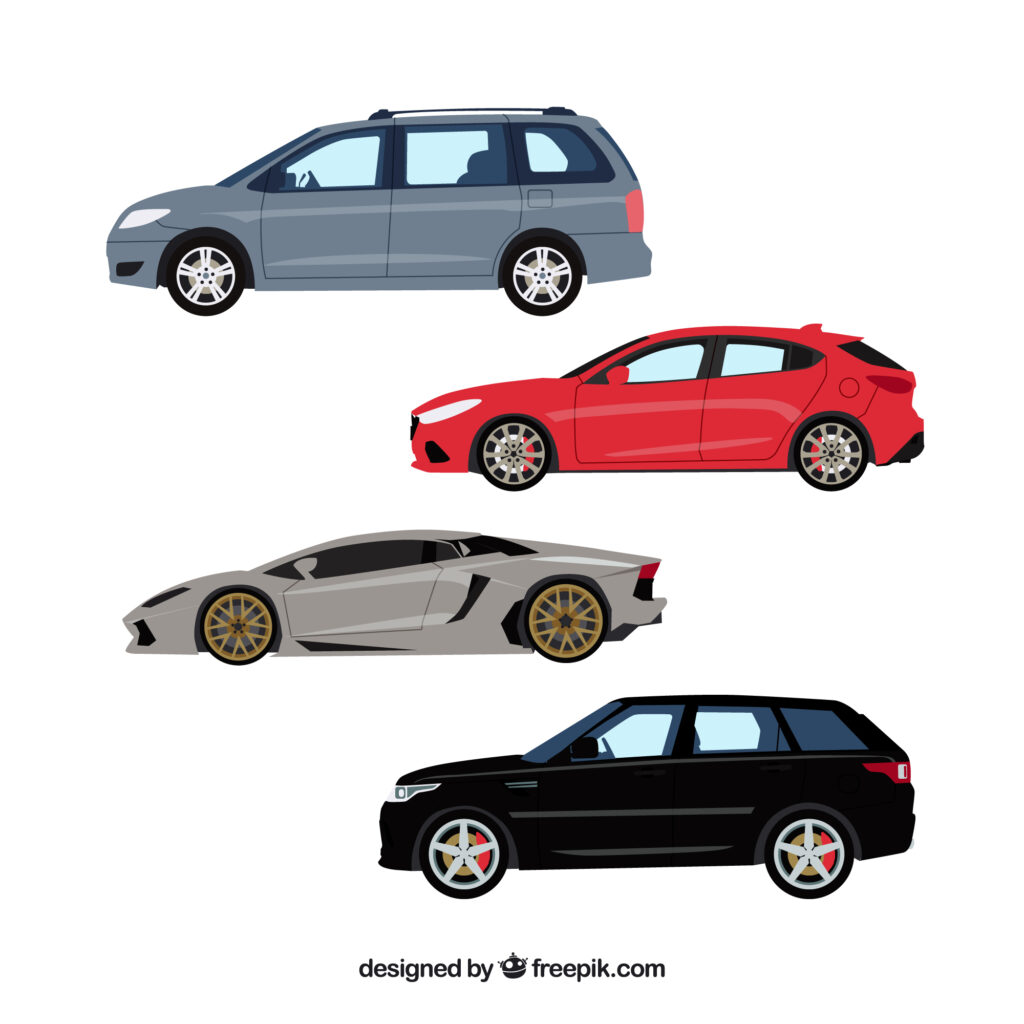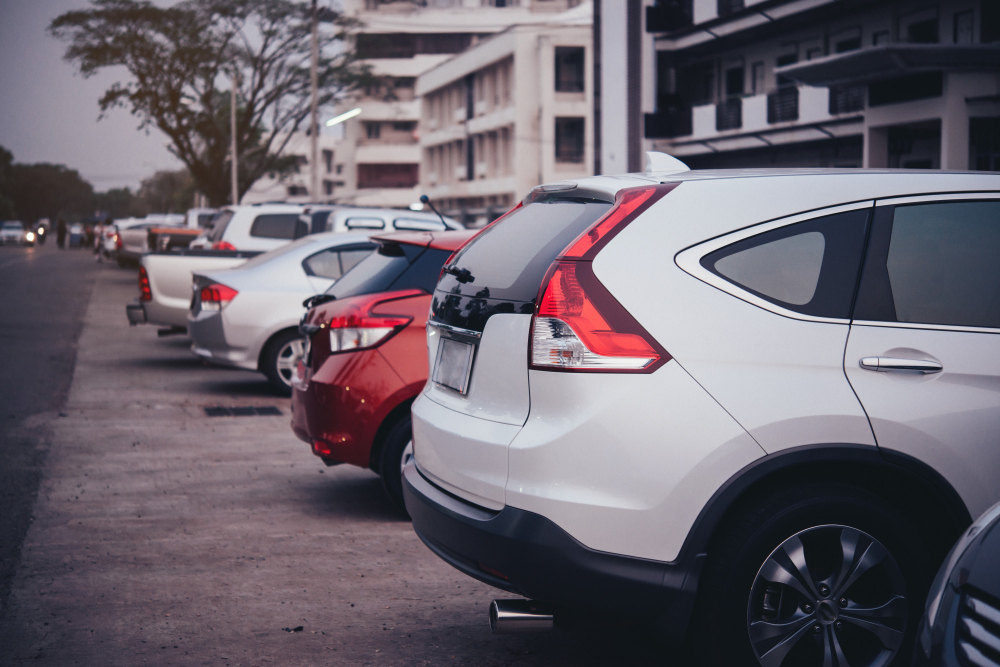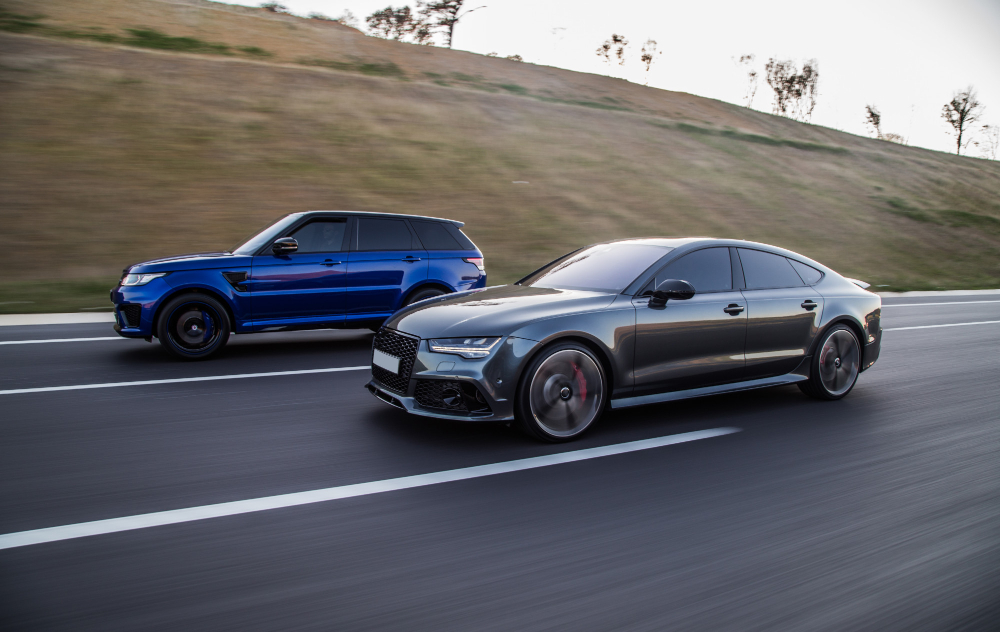The Indian automotive landscape has witnessed a dramatic transformation over the past decade. While sedan cars India once dominated the premium segment, SUVs have emerged as the new favorites among Indian consumers. This shift reflects changing lifestyles, evolving preferences, and practical considerations that influence car buying decisions across urban and rural markets.
From the once-popular Honda City to the reliable Hyundai Verna, traditional sedans are facing unprecedented challenges. Understanding these car market trends helps us decode what drives Indian consumers’ automotive choices and where the industry is heading.
The Golden Era of Sedans in India
Historical Dominance of Sedan Cars India
Sedans ruled India’s automotive market for decades, representing status, comfort, and sophistication. Models like the Honda City, Hyundai Verna, and Maruti Suzuki Dzire became household names, offering families the perfect blend of practicality and prestige.
The Honda City, launched in 1998, revolutionized the compact sedan segment. Its refined driving experience, spacious interiors, and reliable performance made it the go-to choice for aspiring middle-class families. Similarly, the Hyundai Verna carved its niche with modern features and contemporary design language.
During the 2000s and early 2010s, sedans accounted for a significant portion of passenger vehicle sales. Their three-box design offered clear advantages: dedicated boot space, better aerodynamics, and a formal appearance that resonated with Indian sensibilities.
Why Sedans Were Perfect for Indian Roads
Indian consumers initially gravitated toward sedans for several practical reasons. The lower ground clearance worked well on relatively better urban roads, while the elongated design provided excellent stability at highway speeds.
Sedans also offered superior fuel efficiency compared to larger vehicles, a crucial factor in a price-sensitive market. Models like the Honda City consistently delivered impressive mileage figures, making them economical choices for daily commuting and long-distance travel.
The formal appearance of sedans aligned perfectly with Indian aspirations. Owning a sedan symbolized success and upward mobility, particularly among white-collar professionals and business owners.
The SUV Revolution: Understanding the Shift
What Triggered the SUV Boom in India
The SUV revolution in India didn’t happen overnight. Several factors converged to create the perfect storm that would reshape car market trends fundamentally.
Infrastructure development played a crucial role. As India invested heavily in road construction and urban development, consumers began encountering more diverse driving conditions. The higher seating position and better ground clearance of SUVs became practical advantages rather than mere preferences.
Changing family structures also influenced buying decisions. Nuclear families with higher disposable incomes sought vehicles that could accommodate weekend getaways, outdoor adventures, and varied lifestyle needs. SUVs offered the versatility that traditional sedans couldn’t match.
Consumer Psychology Behind SUV Preferences
The psychological appeal of SUVs extends beyond practical considerations. The commanding driving position provides a sense of safety and control that resonates with Indian consumers navigating increasingly congested roads.
SUVs also project a stronger road presence, which appeals to status-conscious buyers. The robust appearance and imposing stance of SUVs communicate success and confidence in ways that sedans traditionally couldn’t.
Furthermore, the perceived safety benefits of SUVs, whether real or imagined, influence family-oriented purchase decisions. Parents often view SUVs as safer options for their loved ones, driving preference shifts across demographic segments.
Current Market Dynamics: Sedans vs SUVs

Sales Figures and Market Share Analysis
Recent car market trends reveal the stark reality of India’s changing automotive preferences. SUV sales have consistently outpaced sedan sales across multiple segments, with some months showing SUVs capturing over 40% of the passenger vehicle market.
Traditional sedan champions like the Honda City and Hyundai Verna have seen their market share decline significantly. While these models continue to attract loyal customers, their overall volumes have dropped as consumers migrate toward SUV alternatives.
The compact SUV segment, in particular, has exploded with options like the Hyundai Creta, Kia Seltos, and Tata Nexon capturing substantial market share. These vehicles offer SUV benefits at price points that previously belonged to premium sedans.
Regional Variations in Preferences
Car buying preferences vary significantly across Indian regions, reflecting local infrastructure, cultural factors, and economic conditions. Urban metros still show stronger sedan preferences, particularly among corporate executives and professionals who prioritize comfort and fuel efficiency.
Tier-2 and Tier-3 cities demonstrate stronger SUV preferences, driven by infrastructure challenges and lifestyle considerations. Rural areas increasingly favor SUVs for their versatility and ability to handle diverse road conditions.
Northern markets show different patterns compared to southern regions, with local preferences influenced by terrain, climate, and cultural factors. Understanding these regional nuances helps manufacturers tailor their strategies effectively.
Honda City: The Sedan Stalwart’s Journey
Evolution and Adaptation Strategies
The Honda City remains one of the most recognizable names among sedan cars India, but its journey reflects the broader challenges facing the segment. Honda has continuously evolved the City to meet changing consumer expectations while maintaining its core identity.
Recent generations of the Honda City have incorporated SUV-like features, including higher ground clearance, more commanding seating positions, and robust styling elements. These adaptations represent Honda’s attempt to bridge the gap between traditional sedan benefits and SUV appeal.
The latest Honda City offers advanced safety features, premium interiors, and connectivity options that rival many SUVs. However, its fundamental three-box design continues to limit its appeal among consumers seeking SUV aesthetics.
Competing Against SUV Dominance
Honda’s strategy for the City involves emphasizing its unique strengths while addressing SUV advantages. The focus on fuel efficiency, driving dynamics, and premium features positions the City as a sophisticated alternative to SUVs.
Marketing campaigns increasingly highlight the City’s refined driving experience, superior fuel economy, and lower maintenance costs. These rational benefits appeal to consumers who prioritize long-term ownership economics over initial emotional appeal.
Honda has also introduced hybrid variants and advanced powertrains to keep the City competitive. These technological improvements demonstrate the brand’s commitment to evolving with market demands while preserving sedan advantages.
Hyundai Verna: Navigating Market Challenges
Design Evolution and Feature Enhancement
The Hyundai Verna has undergone significant transformations to remain relevant in India’s changing automotive landscape. Hyundai’s design philosophy has evolved to incorporate more dynamic and contemporary elements that appeal to younger consumers.
Recent Verna generations feature sportier styling, advanced infotainment systems, and comprehensive safety packages. These enhancements position the Verna as a modern, feature-rich alternative to entry-level SUVs.
Hyundai’s approach involves emphasizing the Verna’s premium positioning while highlighting practical advantages like superior fuel efficiency and lower running costs. This strategy targets rational buyers who appreciate sedan benefits despite SUV popularity.
Market Positioning and Competition
The Hyundai Verna competes in an increasingly challenging environment where SUVs offer similar features at comparable prices. Hyundai’s response involves creating clear value propositions that highlight sedan advantages.
Marketing strategies emphasize the Verna’s refined driving experience, spacious interiors, and advanced technology features. These campaigns target consumers who value sophistication and efficiency over SUV aesthetics.
Hyundai also leverages its strong service network and brand reliability to maintain Verna’s competitive position. The focus on total ownership experience helps differentiate the Verna from SUV alternatives.
Factors Driving Consumer Preferences
Economic Considerations and Value Perception
Economic factors play crucial roles in shaping car market trends across India. While SUVs command premium prices, consumers often perceive them as offering better value for money due to their versatility and perceived utility.
Sedans traditionally offered better fuel efficiency and lower maintenance costs, but modern SUVs have narrowed these gaps significantly. This convergence reduces sedans’ traditional economic advantages while SUVs maintain their practical and emotional appeal.
Financing options and insurance costs also influence purchase decisions. SUVs often require higher insurance premiums and down payments, but consumers seem willing to absorb these costs for perceived benefits.
Lifestyle Changes and Urbanization
Rapid urbanization and changing lifestyles significantly impact automotive preferences. Growing urban populations seek vehicles that can handle diverse scenarios, from daily commuting to weekend adventures.
SUVs align better with evolving lifestyle needs, offering cargo space for shopping, travel, and recreational activities. Their higher seating position provides better visibility in traffic-heavy urban environments.
Changing family structures also favor SUVs. Joint families and extended social circles require vehicles with greater passenger and cargo capacity, making SUVs more practical choices than traditional sedans.
Infrastructure Development Impact
India’s infrastructure development has created new driving challenges that favor SUVs over sedans. Improved highways encourage long-distance travel, while ongoing construction projects create temporary road conditions that benefit higher ground clearance.
Urban infrastructure improvements haven’t eliminated all road quality issues. Many cities still have areas with poor surfaces, speed breakers, and flooding during monsoons. SUVs handle these conditions better than low-slung sedans.
Parking infrastructure in Indian cities often accommodates larger vehicles, reducing concerns about SUV size. Shopping malls, office complexes, and residential areas increasingly design parking spaces for SUVs and larger vehicles.
Technology and Innovation Trends

Advanced Features Competition
Both sedans and SUVs are incorporating advanced technologies to attract tech-savvy consumers. Features like connected car technology, advanced driver assistance systems, and premium infotainment become standard expectations rather than luxury additions.
Sedan manufacturers are investing heavily in technology to differentiate their offerings. The Honda City and Hyundai Verna now offer features that were once exclusive to luxury vehicles, including premium audio systems, wireless charging, and comprehensive connectivity options.
SUV manufacturers respond by offering even more advanced features, creating an escalating technology arms race. This competition benefits consumers but challenges manufacturers to innovate continuously while managing costs.
Electrification and Future Mobility
The transition toward electric vehicles represents another dimension of car market trends. Both sedan and SUV segments are witnessing electric variants, but SUVs seem better positioned for electric adoption due to their ability to accommodate larger battery packs.
Electric sedans face challenges related to range anxiety and charging infrastructure, while electric SUVs can offer longer ranges and more practical charging solutions. This technological shift might further favor SUVs in the long term.
Hybrid technology adoption varies between segments, with sedans often leading in fuel efficiency-focused hybrid systems while SUVs incorporate performance-oriented hybrid setups. These different approaches reflect each segment’s core customer priorities.
Regional Market Analysis
Urban vs Rural Preferences
Urban markets show more balanced preferences between sedans and SUVs, with professional users often preferring sedans for their efficiency and comfort. City dwellers appreciate sedans’ maneuverability in tight spaces and fuel efficiency for daily commuting.
Rural markets demonstrate stronger SUV preferences due to infrastructure challenges and lifestyle requirements. Rural consumers need vehicles that can handle diverse road conditions while providing cargo space for various activities.
Semi-urban areas represent growth opportunities for both segments, with preferences depending on local infrastructure development and economic conditions. These markets often drive overall car market trends due to their rapid growth and increasing purchasing power.
State-wise Variations
Different Indian states show distinct automotive preferences influenced by local factors. States with better road infrastructure may show stronger sedan preferences, while states with challenging terrain favor SUVs.
Economic development levels across states impact car buying patterns. Wealthier states show greater diversity in vehicle choices, while developing states may prioritize practical considerations over brand preferences.
Cultural factors also influence regional preferences. Some regions traditionally prefer certain body styles or brands, creating local market dynamics that manufacturers must understand and address.
Future Outlook and Predictions
Emerging Trends in Indian Automotive Market
The Indian automotive market continues evolving rapidly, with several trends shaping future preferences. Shared mobility, electric vehicles, and connected car technologies will influence both sedan and SUV segments.
Younger consumers entering the market bring different priorities and preferences. Their technology expectations, environmental consciousness, and lifestyle choices will drive future car market trends significantly.
Autonomous driving technology, while still emerging, may reshape preferences between sedans and SUVs. The practical advantages of each body style might become less relevant as vehicles become more autonomous.
Manufacturer Strategies and Adaptations
Automotive manufacturers are adapting their strategies to address changing preferences. Some focus on strengthening their SUV portfolios, while others work to revitalize sedan offerings with enhanced features and positioning.
Global manufacturers are tailoring their India strategies to local preferences while maintaining global platform efficiencies. This approach allows them to offer competitive products while managing development costs.
New entrants in the Indian market often prioritize SUV segments due to their growth potential. This focus intensifies competition while providing consumers with more choices across price segments.
Market Projections and Growth Opportunities
Industry analysts project continued SUV growth in India, but sedan segments may stabilize rather than disappear entirely. Niche applications and specific consumer segments will continue supporting sedan demand.
Electric vehicle adoption may create new opportunities for both segments. Sedans might benefit from their aerodynamic advantages in electric applications, while SUVs could leverage their space advantages for battery packaging.
Export opportunities for Indian-manufactured vehicles may influence domestic market strategies. Manufacturers might maintain sedan production for export markets while focusing SUV development on domestic preferences.
Impact on Automotive Industry
Manufacturing and Supply Chain Adaptations
The shift toward SUVs has required significant manufacturing adaptations across the Indian automotive industry. Production lines, supplier networks, and component sourcing have all evolved to accommodate changing demand patterns.
Manufacturers have invested heavily in SUV production capabilities while maintaining sedan manufacturing flexibility. This dual approach allows them to respond to market changes while preserving options for future shifts.
Supply chain partners have also adapted their capabilities to support SUV production requirements. Component suppliers now focus more on SUV-specific parts while maintaining sedan component production for existing models and export markets.
Employment and Economic Impact
The automotive industry’s evolution impacts employment across manufacturing, sales, and service sectors. SUV production often requires different skill sets and capabilities compared to sedan manufacturing.
Dealer networks have adapted their sales strategies, showroom layouts, and customer engagement approaches to accommodate SUV preferences. Sales personnel now require training on SUV-specific features and benefits.
Service networks have evolved to handle SUV maintenance requirements, which often differ from sedan service needs. This evolution affects technician training, equipment requirements, and service facility layouts.
Frequently Asked Questions
Why are SUVs becoming more popular than sedans in India?
SUVs are gaining popularity due to their higher seating position, better ground clearance for Indian road conditions, greater versatility for varied uses, and stronger road presence. Infrastructure development and changing lifestyles also favor SUV characteristics over traditional sedan advantages.
Are sedans like Honda City and Hyundai Verna still worth buying?
Yes, sedans like the Honda City and Hyundai Verna remain excellent choices for buyers prioritizing fuel efficiency, driving dynamics, and sophisticated design. They offer refined driving experiences, lower running costs, and premium features that appeal to specific consumer segments.
What are the main advantages of sedans over SUVs?
Sedans typically offer better fuel efficiency, superior aerodynamics, more refined driving dynamics, easier parking in tight spaces, and often lower purchase and maintenance costs. They also provide a more formal appearance that some consumers prefer.
How do SUVs compare to sedans in terms of safety?
Modern sedans and SUVs both offer comprehensive safety features, including multiple airbags, ABS, electronic stability control, and advanced driver assistance systems. Safety depends more on specific model features than body style, though SUVs’ size and weight can provide advantages in certain collision scenarios.
What factors should I consider when choosing between a sedan and SUV?
Consider your primary usage patterns, family size, budget, fuel efficiency requirements, parking constraints, and personal preferences. Evaluate factors like ground clearance needs, cargo requirements, driving conditions, and long-term ownership costs to make the best decision for your specific situation.
Will sedans disappear from the Indian market?
Sedans are unlikely to disappear completely but may become more niche-focused. Manufacturers will likely continue offering sedans for specific consumer segments while expanding SUV portfolios to meet broader market demand. Electric vehicle adoption may also create new opportunities for sedan body styles.
How do maintenance costs compare between sedans and SUVs?
Sedans generally have lower maintenance costs due to their simpler mechanical systems, smaller tire sizes, and more accessible components. SUVs may require higher maintenance expenses due to their complex drivetrains, larger tires, and specialized components, though this gap is narrowing with modern designs.
What role does fuel efficiency play in the sedan vs SUV choice?
Fuel efficiency remains a crucial factor for Indian consumers. Sedans traditionally offer better mileage due to their aerodynamic design and lighter weight. However, modern SUVs have improved significantly in fuel efficiency, reducing this traditional sedan advantage while maintaining SUV benefits.
